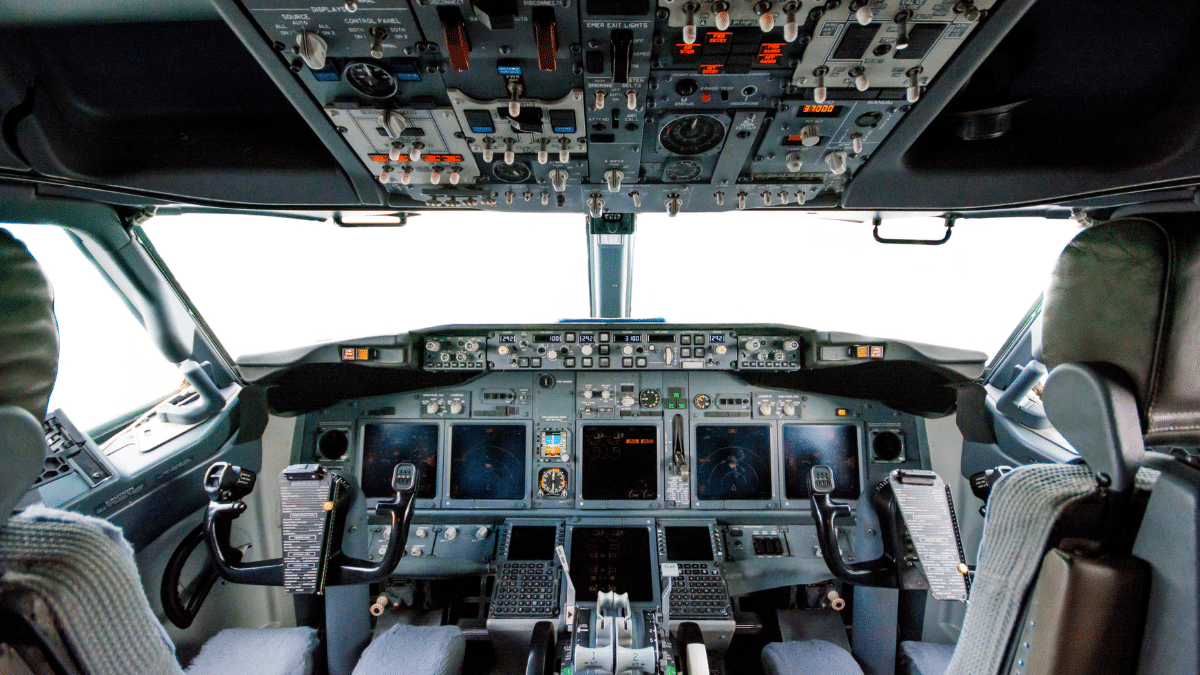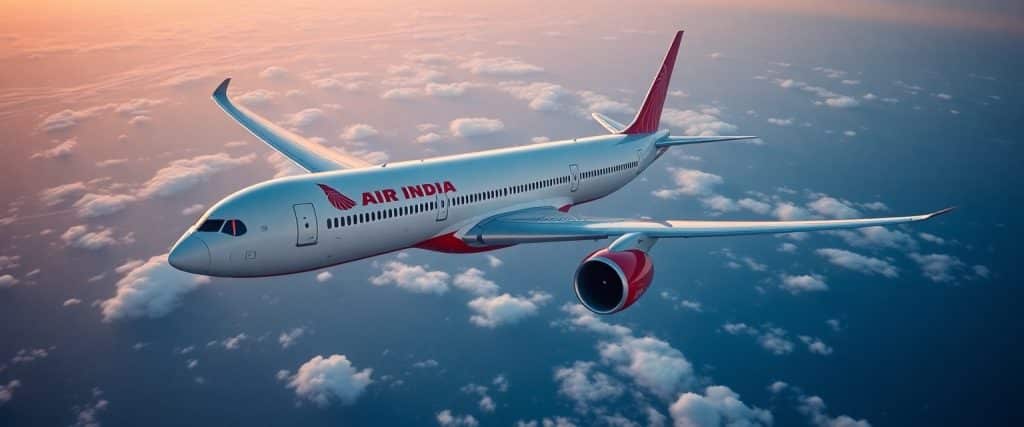You may have heard about the devastating Air India crash that claimed 241 lives and sparked renewed discussions about aviation safety. This tragic event has brought attention to whether installing video cameras in cockpits could enhance accident investigations by providing more detailed insights into pilot actions. While some experts argue that video footage could fill gaps left by voice and data recorders, others worry about privacy concerns and potential misuse. Understanding this debate is important if you want to stay informed about the evolving measures aimed at safeguarding air travel.
A Tragic Catalyst: The Air India Crash
Incident Overview and Immediate Aftermath
The crash of Air India flight 171 in Ahmedabad claimed 241 lives onboard and 19 more on the ground, leaving only one survivor. Seconds after takeoff, investigators suggest the Boeing 787’s engines were cut off, triggering an irrecoverable situation. The scale of this disaster immediately intensified calls for improved accident investigation tools, thrusting cockpit video recorders back into aviation safety discussions worldwide.
Preliminary Findings and Investigative Challenges
India’s Aircraft Accident Investigation Bureau (AAIB) preliminary report indicates possible deliberate fuel cutoff by a pilot, raising sensitive questions about crew mental health. With only voice and data recordings available, investigators face challenges filling in behavioral context and pilot actions—areas where video footage could prove indispensable but remain unavailable.

The Case For Cockpit Video Recorders
Installing video cameras in cockpits could provide critical insights beyond what voice and flight data recorders reveal. They capture pilot behaviors, cockpit environment, and real-time actions that might explain complex incidents, especially those involving human factors like mental health. As Willie Walsh pointed out, video alongside audio would significantly enhance investigations, offering a more complete picture of events leading up to accidents. This visual context can clarify ambiguous data and help prevent future tragedies by identifying unsafe practices or distractions otherwise missed.
Enhancing Investigative Processes and Accountability
Video recorders enrich investigative accuracy by filling gaps left by existing cockpit data. They reveal exactly what pilots are doing during critical moments, including distractions or protocol deviations. This transparency holds flight crews accountable and assists investigators in determining root causes more swiftly, leading to more targeted safety recommendations. With cockpit video, you gain a clearer record that moves beyond assumptions, potentially shortening investigation times and improving trust in aviation safety outcomes.
Learning from Global Aviation Incidents
International crash investigations have demonstrated how cockpit video can be invaluable. The 2023 Australian Transport Safety Bureau inquiry into the Robinson R66 helicopter crash relied heavily on footage showing the pilot distracted by personal tasks, which was key to understanding the accident’s cause. Similarly, after Egyptair Flight 990’s intentional crash in 1999, US safety experts pushed for cockpit image recorders to better investigate pilot actions. These cases highlight how video evidence can address unanswered questions and guide improvements in pilot monitoring and flight safety.
The Australian Transport Safety Bureau’s 2023 report exemplifies how onboard cameras can shed light on unseen pilot behaviors, such as using mobile phones or eating, which contributed to the fatal mid-air breakup of the Robinson R66 helicopter. This evidence not only pinpointed distractions but also encouraged manufacturers to install factory-fitted cameras for ongoing safety benefits. The hindsight gained from recorded visuals informs better pilot training and operational protocols, showing how video can transform both immediate accident inquiries and long-term aviation safety strategies worldwide.
The Opposition: Privacy and Misuse Concerns
Despite the potential safety benefits, many argue that cockpit video recorders pose significant risks to pilot privacy and could be exploited beyond accident investigations. Concerns focus on footage being used for disciplinary measures, leaked publicly, or sensationalized by media, causing distress to pilots and their families. The balance between gaining investigative insight and protecting individual rights remains a contentious issue, with strong voices cautioning that the harms may outweigh the benefits in everyday operations.
Pilot Unions’ Stance on Video Surveillance
US pilot unions like ALPA and APA firmly oppose cockpit cameras, stating current voice and data recorders provide sufficient detail to determine crash causes. APA’s Dennis Tajer highlights that cameras represent an invasion of privacy and their introduction often stems from emotional reactions following tragedies. Instead, unions advocate for improved data recording technology and emphasize the trust in established investigative tools without encroaching on pilots’ personal space during flights.
Fears of Misuse and Ethical Implications
Concerns about misuse extend beyond privacy, with experts fearing cockpit footage could be weaponized for workplace surveillance or public spectacle. Retired pilot John Cox points out that having a pilot’s most vulnerable moments broadcast on news outlets is both unethical and traumatic for families. IFALPA echoes skepticism about securing airtight confidentiality, warning that demand for sensational visuals makes leaks and misuse almost inevitable, undermining trust in the system.

Balancing Safety and Privacy: Seeking Common Ground
Balancing the need for enhanced safety through cockpit video with legitimate pilot privacy concerns demands nuanced policies. You’ll find that many experts agree on the potential safety benefits, as seen in cases like the Air India crash, yet advocate for strict safeguards to prevent misuse. Establishing trust between pilots, regulators, and airlines requires transparency, clear guidelines on camera use, and strong protections against unauthorized access or public release of footage. This middle ground could strengthen safety protocols while respecting personal boundaries within the cockpit environment.
Potential Guidelines for Camera Implementation
Implementing cockpit cameras might involve restricting access to investigators only, with encryption protecting recorded data until an accident review is activated. You could see policies mandating automatic deletion of routine footage after a set period, minimizing misuse risks. Cameras might record on low-resolution settings unless triggered by an incident, reducing unnecessary surveillance. Defining strict rules on storage, handling, and limited use for safety improvements rather than disciplinary measures would be key to gaining acceptance among flight crews.
Ensuring Confidentiality and Addressing Pilot Concerns
Pilot unions emphasize that confidentiality protections around cockpit voice recorders must extend to video footage to prevent public exposure or unwarranted disciplinary use. You’ll often hear that unless global standards guarantee footage security and controlled access, fears of misuse will dominate. The International Federation of Air Line Pilots Associations has openly doubted whether such protections are achievable, given the high public and media interest in sensational crash images.
While cockpit voice recorder transcripts remain confidential and selectively released, video footage raises unique challenges as it contains identifiable images of crew members. This visual element intensifies privacy concerns, especially with risks of leaks or public distribution after accidents. Aviation safety expert John Cox highlights the trauma that families face when footage of a pilot’s final moments is broadcast widely. Without robust, enforceable international regulations ensuring footage is strictly limited to investigation use and promptly destroyed thereafter, gaining pilot trust remains difficult. Efforts to craft such rules would have to address varying legal frameworks across countries and include pilot representation at every stage to mitigate fears of surveillance overreach and disciplinary exploitation.
The Future of Aviation Safety: What Lies Ahead?
Emerging technologies and evolving safety protocols promise to reshape aviation safety, but the path forward isn’t straightforward. You’ll see increasing integration of data analytics, AI-assisted monitoring, and possibly cockpit video recorders, all aimed at preventing incidents like the Air India tragedy. Balancing pilot privacy concerns with enhanced investigative tools remains a pivotal challenge as stakeholders push toward smarter, more transparent flight safety systems.
Technological Innovations and Their Impact
Advances such as AI-driven cockpit monitoring and higher-fidelity data recorders enhance your ability to detect anomalies in real time. Cameras, as demonstrated by the Australian helicopter crash investigation, can reveal distracted behavior—like mobile phone use or eating—that traditional data cannot. These innovations promise to make investigations faster and more thorough, potentially saving lives by identifying hazards before they escalate.
The Ongoing Debate: Short-Term Reactions vs. Long-Term Solutions
Initial calls for cockpit cameras often emerge after tragic accidents, fueled by the urge to find clear answers quickly. Yet, you’ll find industry veterans caution against rushing to video solutions without addressing broader systemic improvements. Investments in better data quality, pilot wellbeing, and secure data management might prove more effective over time than installing cameras alone.
The tension between quick fixes and comprehensive strategies is palpable. While video footage could have clarified key questions in the Air India crash, pilots’ unions fear misuse and privacy breaches that could undermine morale and trust. You see organizations advocating enhanced voice and data recorders with stronger confidentiality safeguards, arguing that the benefits of video must be weighed against real risks. Long-term approaches could involve integrating multiple data sources, improving mental health support, and refining safety culture, rather than relying solely on surveillance technology. This debate will shape regulatory decisions and industry practices for years to come.
Summing up
Hence, the Air India crash has reignited the debate over installing cockpit video recorders, challenging you to weigh safety benefits against privacy concerns. While video footage could provide clearer insights during investigations and enhance your understanding of pilot actions, many pilots worry about misuse and confidentiality. As the aviation industry considers this balance, your perspective on protecting both passengers and crew remains necessary in shaping future safety measures.
Frequently Asked Questions
What happened in the Air India Flight 171 crash?
On June 12, 2025, Air India Flight 171, a Boeing 787-8 Dreamliner, crashed shortly after takeoff from Ahmedabad, India, resulting in the deaths of 241 passengers and 19 individuals on the ground. Preliminary investigations suggest that both engine fuel cutoff switches were manually activated shortly after takeoff, leading to engine failure and the subsequent crash. The investigation is ongoing, with a focus on the actions of the senior pilot, Captain Sumeet Sabharwal. Source
Why is there a debate over cockpit video recorders?
The crash has reignited discussions about the necessity of cockpit video recorders. Proponents argue that video footage could provide valuable insights into pilot actions and decision-making processes, aiding in accident investigations. However, pilot unions express concerns about privacy violations and the potential misuse of recorded footage. The debate centers on balancing safety improvements with protecting pilot rights.
What are the current regulations regarding cockpit video recorders?
Currently, cockpit video recorders are not mandatory in commercial aircraft. The International Civil Aviation Organization (ICAO) requires flight data recorders (FDRs) and cockpit voice recorders (CVRs), but video recorders are not included in the standard requirements. Some countries and manufacturers have implemented cockpit video systems voluntarily, but there is no global mandate.
What are the potential benefits of installing cockpit video recorders?
Installing cockpit video recorders could enhance accident investigations by providing visual context to complement audio and flight data. They could help identify pilot actions, interactions, and environmental factors that contribute to incidents. Additionally, video footage could assist in assessing pilot performance and training needs.
What are the concerns associated with cockpit video recorders?
Concerns include potential invasions of pilot privacy, the risk of misuse or unauthorized access to footage, and the impact on pilot behavior due to the presence of cameras. Pilot unions argue that existing systems provide sufficient data for investigations and that video surveillance could undermine trust and transparency in cockpit operations.

